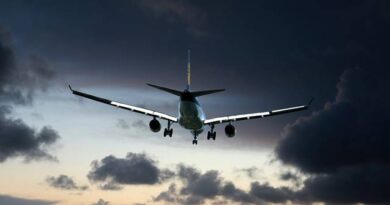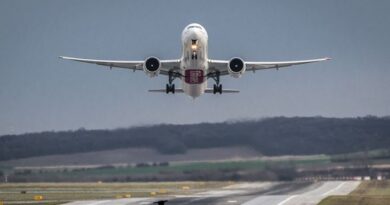WORLD’S Largest ALL-ELECTRIC Plane – Completed First Flight
Carbon footprint, climate change, global warming… The human made harmful vehicles are a major topic of discussions on these subjects and the very focused subject for research and development in terms of cleaner alternatives.
Plane engines release carbon dioxide (CO2) and other greenhouse gases into the Earth’s atmosphere by using fossil fuel, which contribute to the acceleration of global warming. “Aviation is essentially a fossil fuel industry, one which guzzles an eye-watering 5m barrels of oil every day” writes environmental sociologist Roger Tyers.
One of the main focused area on research and development is the electric vehicles to replace with conventional fossil ones. It is known that there are about 170 electric aircraft projects internationally a figure which has risen by 50 per cent since April 2018, based on figures by consulting firm Roland Berger.
It seems like a dream to fly with an electric plane for an intercontinental flight. The main challenge beyond electric plane development is the battery capacity and technology.
E-CARAVAN (The Magni500-powered Grand Caravan)
On the other hand, a very smiling news from U.S.A Washington the Cessna Grand Caravan (eCaravan). Retrofitted with an electric engine produced by MagniX company flew about 30 minutes over Washington skies on 28 May 2020.
That was a historical moment in aviation industry.
Roei Ganzarski, the CEO of MagniX, said traditional fossil fuel using aeroplanes are both expensive to operate and very polluting. “Electric airplanes will be 40%-70% lower cost to operate per flight hour” he said. “That means operators will be able to fly more planes into smaller airports. Meaning a shorter and door-to-door experience, with no harmful CO2 emissions.”
Ganzarski said MagniX believed that all flights of less than 1,000 miles would be completely electric in 15 years’ time. But he said: “Battery [energy] density is not where we would like to see it. While it is good for ultra-short flights of 100 miles on a retrofit aircraft and over 500 miles on a new design aircraft like the Alice, there is plenty of untapped potential in batteries. Now that the first commercial aircraft has flown all-electric, battery companies are starting to work more diligently on aerospace-ready battery solutions.”
Ganzarski believes an electric version of the Caravan would reduce operating costs by 40-80 percent per flight hour, significantly changing the routes operators are able to fly with it. According to Ganzarski the thirty-minute test flight, which would normally consume jet fuel exceeding $300 in cost, used less than six dollars’ worth of electricity.
Companies Magnix and AeroTEC are working on certificating that aircraft by the end of 2021.
In addition, Ganzarski declines to disclose pricing or say how many Magnix-powered aircraft customers have ordered. “There is way more interest at this point than we anticipated,” he says.
Details of flight:
-Aircraft is All Electric Cessna 208B Grand Caravan
-Flight date 28-May-2020
-The flight took place at the AeroTEC Flight Test Center at the Grant County International Airport. ((KMWH) in Moses Lake, Washington U.S.A)
-Passenger capacity of aircraft Cessna Grand Caravans 9 – 14. The Magni500-powered Grand Caravan can carry 4-5 passengers on flights up to 100 miles.
-The flight lasted around 30 minutes, climb up to 2500 feet with one pilot on board.
-Zero Fossil fuel consumption.
for more articles.


